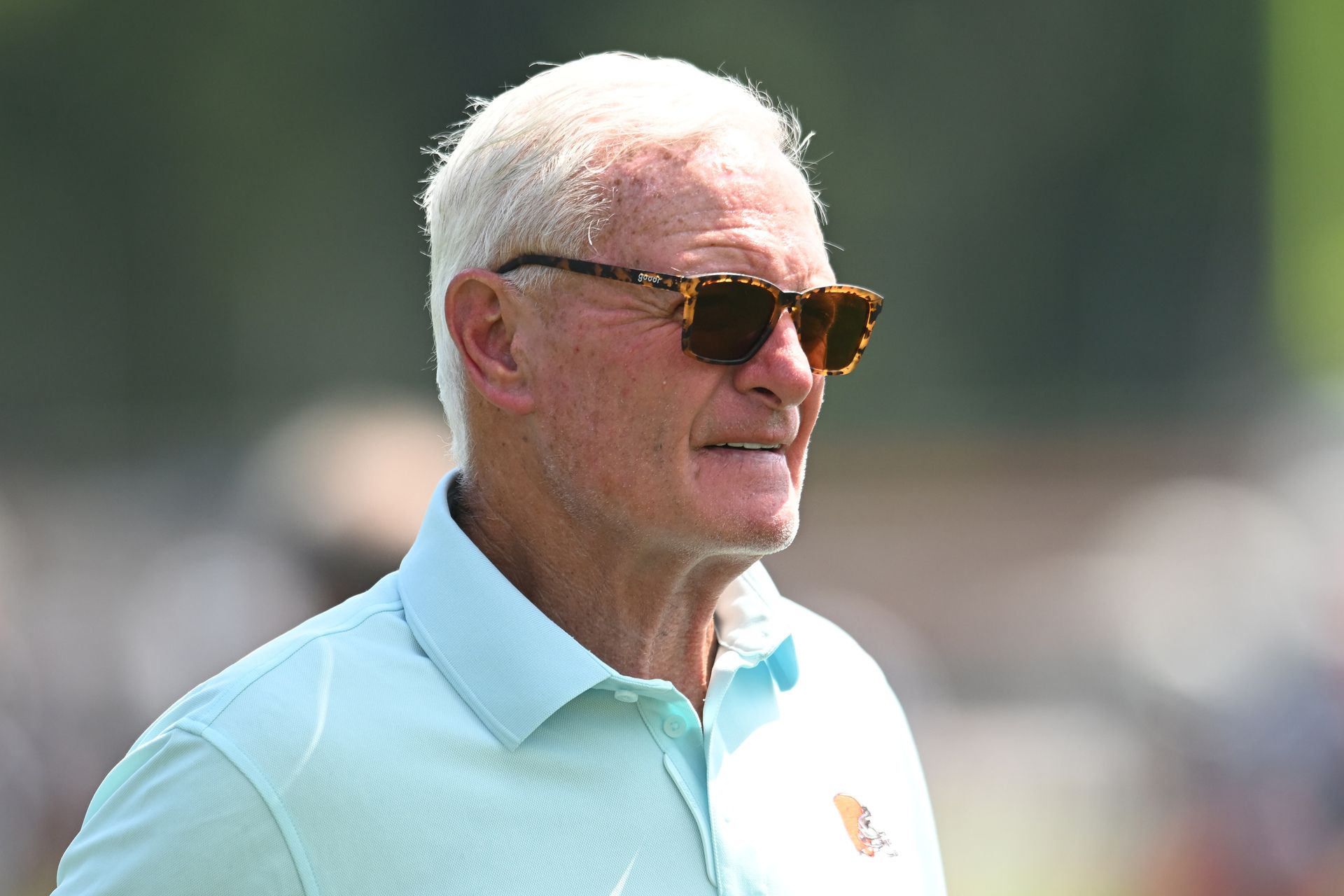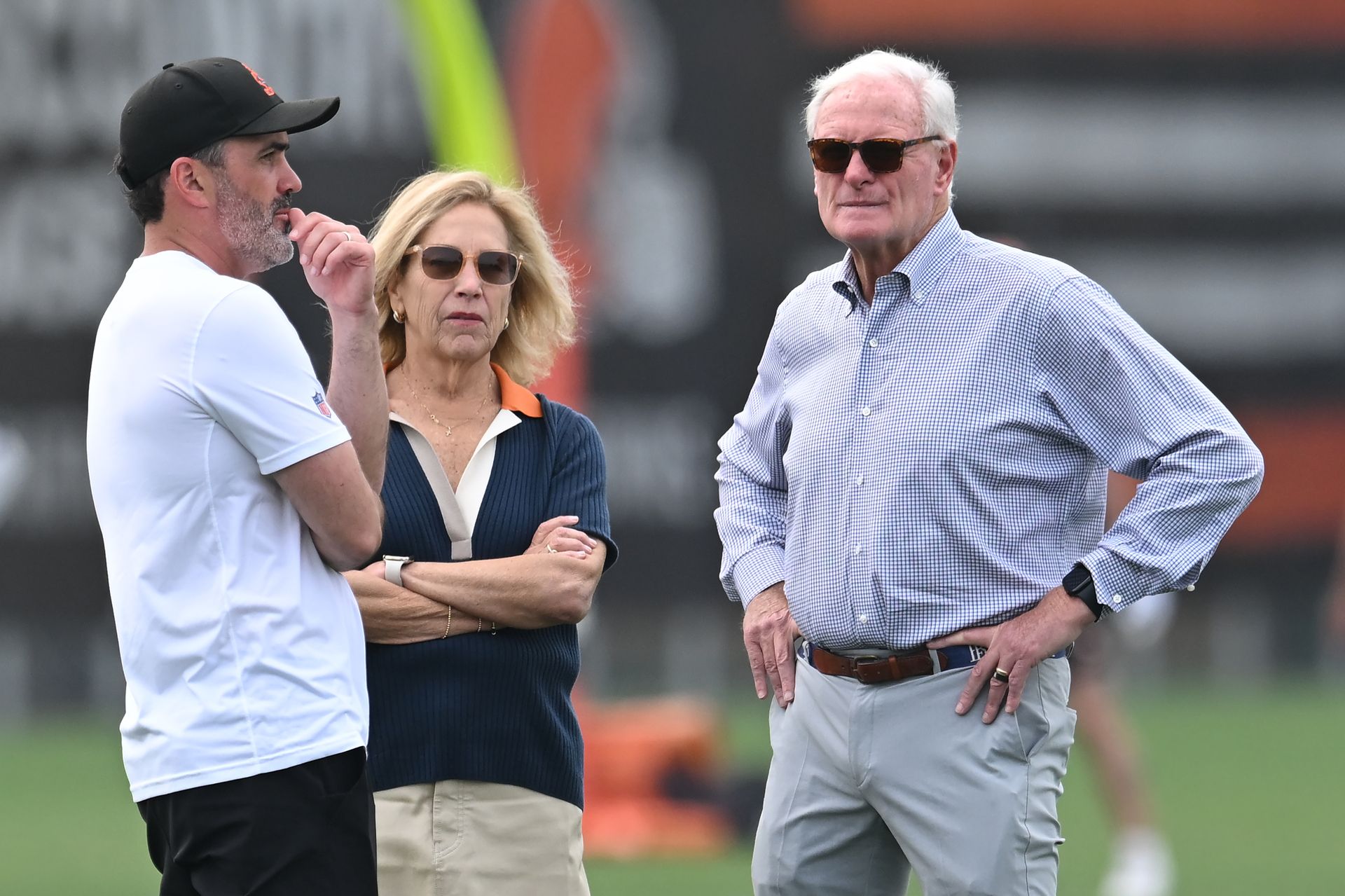- Gridiron Wallet
- Posts
- Jimmy Haslam: From Truck Stops to the Cleveland Browns
Jimmy Haslam: From Truck Stops to the Cleveland Browns

Welcome to Gridiron Wallet — where NFL players don’t just chase rings, they chase bags. From million-dollar grills to side hustles that slap, we’re decoding how football’s finest make it, spend it, and sometimes… fumble it. 🏈🔥
The latest edition of our newsletter covers Jimmy Haslam:
The Pilot Flying J Empire
Diversification and Berkshire Hathaway Deal
Vision Behind the Browns Acquisition

✍️Paper Play
The Pilot Flying J Empire

When you think about the Cleveland Browns, you think of a downtrodden, down-on-their-luck football team that can’t seem to get out of its own way. That’s been the case ever since their return to the NFL in 1999. Nothing seems to change their predicament.
Whether under original owner Al Lerner, his son Randy, or the current owners, Jimmy and Dee Haslam, this team has struggled mightily and consistently. Jimmy Haslam, though, would want that changed in the near future.
Haslam made the big move in 2012, buying the team for a cool $1 billion. So, it’s only been about 13 years… not really long by owner standards.
Funny enough, Haslam had bought a minority stake in the rival Pittsburgh Steelers a few years earlier, though he was forced to sell that after winning his bid for the Browns.
Haslam is the sixth-most recent owner to buy an NFL team (discounting those who inherited a franchise from a relative upon their passing). So he has yet to perfect his craft as an owner on the actual football field.
However, when it comes to building a big business, Haslam has more than enough experience and know-how. As most owners of sports teams tend to be, Haslam came from a family that already owned a business empire. His father, Jim, bought a gas station in Weber City, Virginia, in 1958 and quickly used it as a springboard for a larger venture: The Pilot Company.
In just seven years, Jim expanded to 12 stations, selling about 5 million gallons of gas annually. The company was doing well, but it wasn’t until a 22-year-old Jimmy joined the company in 1976 that it really took off.
That year, the Pilot Company grew exponentially by attaching convenience stores to the gas stations. Five years later, they built their first travel center with a fast-food restaurant inside. These have since become the main focus and crown jewel of the business.
Fast forward about 40 years, and Jimmy has turned his father’s successful business into a giant in the truck stop industry. And a merger with Flying J in 2010 truly put them over the top.
As of 2023, they operate 838 truck stops and employ about 19,000 people. The company crossed $45 billion in revenue in 2021.
The wild success not only gave Haslam the funds he needed to fulfill his dream of owning a sports franchise (even if it is the Browns). It also drew the attention of Warren Buffett’s prestigious holding company Berkshire Hathaway, which started buying shares in 2017 and now has majority control of the company.
And that’s fine with Jimmy Haslam. He’s still got full control of his Browns. Now it’s time for him to take that mediocre franchise and turn it into a national juggernaut, just like he did with Pilot Flying J.

💸 Future Proof
Diversification and Berkshire Hathaway Deal
After Jimmy Haslam was named president and CEO of Pilot Travel Centers in 1996, he set out to diversify the company's portfolio. First was the merger with Marathon’s Speedway truck stops in 2002. Then, in 2003, Pilot acquired the Williams’ Truck Stop chain, which quadrupled the number of stops the company owned.
But Haslam didn’t stop there. In July of 2009, he took advantage of a company facing Chapter 11 bankruptcy and purchased Flying J’s travel centers around the US. This move cemented Haslam and Pilot’s dominance in the travel center industry. They initially kept the Flying J name at the stops, but later rebranded the company to Pilot Flying J.
By 2017, Haslam and his truck stops were thriving, which is when Warren Buffett’s Berkshire Hathaway decided to purchase a 38.6% stake in Pilot Flying J. The initial stake was later jacked up to 80% in 2023 as part of a phased deal. Then, in 2024, Berkshire completed a full takeover.
By the end of Buffett’s acquisition, he paid a total price of $13.56 billion to acquire Pilot Flying J. The deal both validated the company’s value and provided Haslam with immense liquidity, ensuring he remained a billionaire even while selling out a portion of his equity.
These strategic financial moves allowed Haslam to deepen his investment in sports franchises, in addition to the Cleveland Browns. In late 2018, he went on to purchase an MLS team called the Columbus Crew. They’ve won two championship cups since then.
In 2023, Haslam acquired a 25% stake in the Milwaukee Bucks for $800 million. All in all, it gives credence to the idea that he is a sports fan through and through.
Haslam took a company built around convenience stores, oil, maintenance repairs, and restaurants, and turned it all into a portfolio full of sporting interests. Quite honestly, it’s the American Dream.

💡 Gridiron Wallet Trivia
Did you know?
🌿 Jimmy Haslam and his wife, Dee, purchased Major League Soccer’s Columbus Crew in 2019, helping prevent the team from relocating. They also contributed to funding the $314 million Lower.com Field stadium project. The Crew has since become one of MLS’s most stable and competitive franchises—adding a second championship under Haslam’s ownership in 2023.

🏈 ✨Dream Scheme
Vision Behind the Browns Acquisition

Haslam made what turned out to be one of the boldest bets of his career in 2012 when he bought the Cleveland Browns from Randy Lerner for $1.05 billion. Many felt the price tag was a tad high for a team mired in years of mediocrity. After all, the Browns hadn’t tasted playoff success since 1994.
But fast forward to today, and that gamble, in a pure business sense, looks brilliant. Sportico now values the club at $6.14 billion, up 19% from last year. That puts them 23rd among NFL franchises and, notably, even ahead of divisional rivals, the Cincinnati Bengals ($5.5B).
For Haslam, however, the Browns deal was more than football. It was his way of parlaying the family’s Pilot Flying J empire into a seat at the NFL owners’ table. Outgoing team president Mike Holmgren said it best at the time: Haslam would bring “great enthusiasm” and a determination to make it work, qualities Cleveland desperately needed.
That said, it hasn’t always been smooth sailing for the team since Haslam took over. From the Pilot Flying J rebate scandal in 2013 to Deshaun Watson’s legal troubles coming out after his fully guaranteed $230 million contract in 2022, they endured instances of heavy scrutiny, too.
But the numbers and the Browns’ soaring value highlight Haslam’s strategy in action: Buy undervalued sports assets, then let the growth of the leagues do the heavy lifting.
Add in control of venues like Cleveland Browns Stadium and Lower.com Field, and the family’s sports footprint is present everywhere in Ohio.
So, what started as a billion-dollar gamble on a struggling football team has turned into a case study in timing and vision. From Cleveland to Columbus to Milwaukee, Jimmy Haslam has proven that buying into sports at the right time can pay off manifold.

📆 NFL Money Stat of 1972
In 1972, Robert Irsay bought the Los Angeles Rams for $19 million—then immediately traded the team to Carroll Rosenbloom for the Baltimore Colts. That same year, the NFL's average team value was under $20 million. Today, even the least valuable NFL franchise is worth over $4 billion, highlighting the league’s explosive financial growth since the 1970s.
